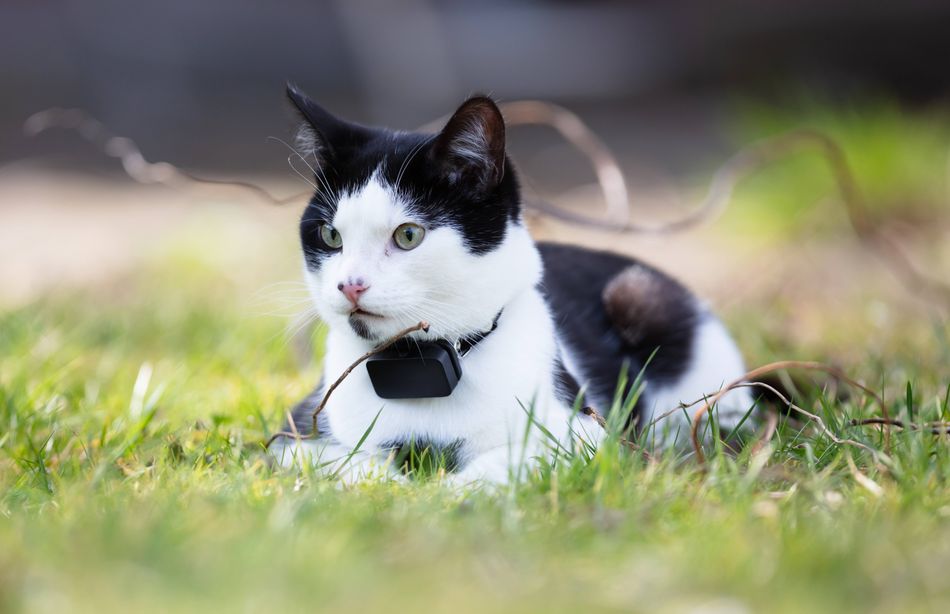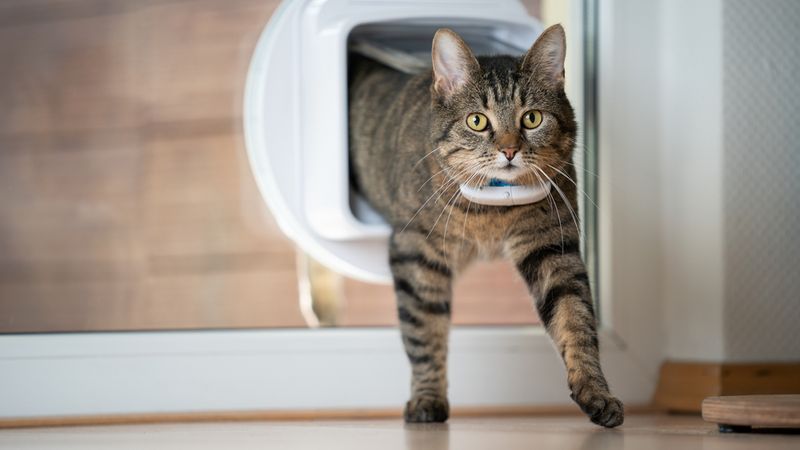Ensuring the Safety of Fur Babies: The Role of GNSS in Advanced Pet Trackers
Explore how GNSS technology, powered by the u-blox M10 platform, offers pet safety with high-precision, low-energy tracking solutions for our furry friends.
The distress associated with a lost pet is a familiar dread for pet owners worldwide. As our furry companions are considered part of the family, their safety and whereabouts are of paramount concern. Technology, specifically Global Navigation Satellite Systems (GNSS), alleviates these worries in this context. GNSS technology encompasses a network of satellites providing global coverage and has been a game-changer in location tracking.
GNSS involves a complex set of satellites (space segment), control stations (control segment), and receivers (user segment) that work in unison to provide precise location data. The history of GNSS dates back to the launch of Sputnik 1 in 1957, which marked the beginning of using satellites for geo-positioning and led to the development of various satellite navigation systems like GPS, GLONASS, Galileo, and BeiDou. Utilizing L-Band radio frequencies, these systems have found applications across numerous industries, offering location tracking, navigation, and mapping services.
The u-blox M10 platform is a unique example of GNSS technology adaptation. This platform is designed for applications requiring low power consumption and small size without compromising performance. It is particularly suited for wearable and industrial applications, including pet trackers. Its ability to handle increased update rates and dynamic accuracy, along with the integration of Super-Signal (Super-S) technology for enhanced RF sensitivity, makes it highly effective in compact product designs.
GNSS technology based on the u-blox M10 platform stands at the forefront of ensuring pet safety. By offering high-precision tracking in a low-energy, compact format, it not only addresses the practical aspects of pet tracking but also provides peace of mind to pet owners. This article will explore how GNSS technology and the u-blox M10 platform can revolutionize pet trackers by offering efficient, reliable, and user-friendly solutions for monitoring our beloved pets.

The Essentials of Pet Tracking Technology
Understanding Pet Trackers
Using GPS and RFID technologies, pet trackers have significantly improved how we care for our pets. Initially, RFID technology facilitated pet tracking; developed in the 1940s for military applications, RFID was first adapted for pet identification in the late 1980s. These RFID chips, implanted under the pet's skin, emitted unique identification numbers when scanned, helping reunite lost pets with their owners.
The advent of GPS technology in pet trackers marked a significant evolution. Initially developed in the 1970s for military purposes, GPS was introduced into consumer products like car navigation systems and mobile phones by the 1990s. The early 2000s saw the introduction of pet GPS trackers, which were initially bulky but soon became more compact and suitable for various pet sizes. These devices combined GPS and cellular communication, allowing real-time monitoring of pets' locations.
In the late 2000s and early 2010s, trackers began integrating both RFID and GPS technologies, offering the benefits of identification and real-time tracking. The mid-2010s saw further advancements with the development of smartphone apps for pet tracking, enabling features like geofencing and alerts for pets leaving designated areas. Wearable tech trends influenced the design of pet trackers, leading to smart collars and tags.
Modern pet trackers have advanced features like improved battery life, precise location tracking, activity and health monitoring, and integration with other smart home devices. Artificial intelligence (AI)-powered predictive analytics in these devices can detect unusual behavior patterns, enhancing pet safety and well-being. The future of pet tracking technology points towards longer-lasting batteries, miniaturization for smaller pets, and the inclusion of additional health sensors.
Key Features of Pet Trackers
Pet trackers must possess certain key features to be effective:
Rugged Design: Pet trackers must be waterproof, water-resistant, and designed for high activity levels. Some must also withstand extended water immersion for pets that swim.
Location History: This feature is particularly favored by cat owners, as it provides insights into their pet's daily movements and behaviors.
Weight and Dimensions: Trackers should be appropriately sized for the pet, ensuring comfort and practicality.
Battery Life: The battery life of a tracker is crucial, as frequent charging may be impractical. Advanced models often require more regular charging.
Subscription Fees: Many pet trackers come with connected subscription services, and the cost of these services should be considered when choosing a tracker.
These features ensure that pet trackers are functional but also convenient and reliable for pet owners. The evolution of pet tracking technology, combined with these critical features, reflects a growing trend in pet care and safety, leveraging technological advancements to provide peace of mind to pet owners.
The u-blox M10 Platform: Enhancing Pet Tracker Capabilities
Technical Specifications of the u-blox M10
The u-blox M10 platform stands out in GNSS technology for its ultra-low power consumption and continuous tracking capabilities. It is specifically designed to meet the demands of wearable and industrial applications, featuring less than 15mW power consumption in continuous tracking mode. This low power requirement and high RF sensitivity significantly reduce the time needed to establish a position fix.
The platform also boasts advanced mitigation features against jamming, spoofing, and RF interference. These capabilities are augmented by the Super-S technology, which enhances performance in weak signal environments or when used with small antennas, making it highly suitable for compact product designs like pet trackers.
Moreover, the u-blox M10 offers quick and easy Wi-Fi 6E access point development, further expanding its connectivity and application potential. Another critical aspect is the computed protection level by the GNSS receiver in real-time, which quantifies the reliability of the position information, thereby improving data quality and ensuring the safety of people and assets.
Benefits for Pet Trackers
The u-blox M10 platform's adaptability to wearables and ease of integration make it ideal for pet trackers. Its small size and efficient power consumption are particularly beneficial for devices like pet trackers, which must be lightweight and long-lasting. Combined with robust performance, this compact form factor means the u-blox M10 can be easily integrated into a wide range of pet-tracking devices without adding unnecessary bulk or draining battery life.
One real-world application of this technology is demonstrated by Pawtrack, a company specializing in cat-tracking collars. Utilizing u-blox’s end-to-end solution based on the industry standard MQTT, Pawtrack has significantly scaled up its customer base, now serving cat owners in 170 countries. The platform's ability to connect to over 600 cellular networks in 190 countries makes this global reach possible. Moreover, the solution offers predictable pricing based on the number of MQTT messages sent, ensuring cost-effectiveness for both the manufacturer and the end user. This scalability and convenience are crucial for efficiently and effectively managing large fleets of IoT devices, like pet trackers.
Design and Future Trajectory of GNSS Pet Trackers
Building Pet Trackers with the u-blox M10
The u-blox M10 platform brings significant advantages to the design of pet trackers through its compact form factor and power efficiency. These attributes are pivotal in creating miniature battery-powered trackers suitable for pets. The MIA-M10 series of chip-sized SiP modules from u-blox exemplify this innovation, offering a power-efficient solution for size-constrained, battery-powered asset-tracking devices, including those for pets. These modules are designed explicitly for trackers in various applications, such as those for people, pets, and livestock, as well as for other uses like bike computers and cameras. This versatility and achieving up to 400% battery life in a tiny 4.5 x 4.5 mm module are game changers for pet-tracking devices.
The Road Ahead for Pet Tracking
The future of pet tracking technology is poised for significant advancements, particularly in health monitoring features and battery life.
Multi-Technology Integration: Future pet trackers must incorporate multiple tracking technologies, such as GPS, Wi-Fi®, Bluetooth®, and radiofrequency (RF). This integration will provide more accurate and reliable tracking in various environments, mainly when GPS alone may be limited, like indoors or in areas with poor satellite reception.
Enhanced Battery Life and Energy Efficiency: As pet trackers evolve, there will be a focus on improving battery life and energy efficiency. Innovations could include energy harvesting from ambient sources or using solar cells to extend battery life and reduce the frequency of recharging.
AI and Health Monitoring: Integrating AI and machine learning is expected to revolutionize pet tracker technology. These technologies can analyze pet behavior patterns, predict potential escape routes, and identify pet health changes. Future trackers may incorporate advanced health monitoring and fitness-tracking features, such as monitoring heart rate, respiratory rate, temperature, and sleep patterns. This data will provide pet owners with valuable insights into their pet's well-being and help in the early identification of health issues.
Data Security and Customizable Designs: With the advancement of pet trackers and the increasing amount of data they collect, data security and privacy will become crucial. Implementing robust encryption and security protocols will be necessary to protect sensitive data. Additionally, future designs of pet trackers are likely to become more customizable and modular, allowing pet owners to tailor devices to their specific needs and facilitate more straightforward device repairs and upgrades.
These developments in pet tracker technology, underpinned by platforms like u-blox M10, highlight a future where pet safety, health monitoring, and user convenience are significantly enhanced, offering peace of mind and a deeper connection between pet owners and their furry companions.
Key Takeaways
The advent and integration of GNSS technology, particularly the u-blox M10 platform, have marked a significant milestone in pet safety. The u-blox M10’s ultra-low power consumption, continuous tracking capabilities, and advanced features like jamming, spoofing, and RF interference mitigation have set new standards in the design and functionality of pet trackers. These technical advancements, coupled with the platform's adaptability for wearables and integration ease, have greatly enhanced the reliability and effectiveness of pet tracking devices.
The u-blox M10 platform has provided a robust solution for real-time pet monitoring and paved the way for future innovations. The trajectory of pet tracking technology is geared towards more sophisticated features like enhanced battery life, health monitoring, AI integration, and improved data security. These advancements indicate a future where pet trackers will not only serve as a tool for locating pets but also as a means of understanding and ensuring their overall well-being.
References
ScienceDirect's Introduction to GNSS technology: This resource provides a comprehensive background on GNSS technology's growth and commercial applications, which would be crucial for understanding the technicalities of pet tracking technologies. Link:https://www.sciencedirect.com/science/article/pii/B9780128186176000019#:~:text=1,navigation%20satellites%20and%20associated%20equipment
MDPI's Role of GNSS-RTN in Transportation Applications: This paper discusses the GNSS-RTN system, which has implications for real-time, highly accurate location services. Insights from this resource could be relevant for explaining the precision required in pet trackers.Link:https://www.mdpi.com/2673-8392/2/3/83#:~:text=The%20Global%20Navigation%20Satellite%20System%E2%80%94Real,over%20a%20broader%20geographic%20region
EU Publications' GNSS User Technology Report: The GNSS User Technology Report could serve as an authoritative source for the latest user technology developments, applications, and trends in GNSS, which could be directly applicable to pet tracker technology. Link:https://op.europa.eu/en/publication-detail/-/publication/73477ef0-3516-11eb-b27b-01aa75ed71a1/language-en#:~:text=Issue%203%2C%202020,a%20summary%20of%20recent
UNOOSA's GNSS Information: The United Nations Office for Outer Space Affairs provides detailed information on GNSS systems, including satellite constellations and ground control stations, offering a high-level overview of the infrastructure behind pet tracking capabilities. Link:https://www.unoosa.org/oosa/en/ourwork/psa/gnss/gnss.html#:~:text=Global%20Navigation%20Satellite%20Systems%20,calculate%20ground%20positions%20by%20trilateration
GPS World's GNSS Solutions for Challenging Environments: This article discusses GNSS solutions that offer centimeter-level accuracy in complex environments, a critical aspect of pet tracking technology when pets venture into areas with obstructed lines of sight to satellites. Link:https://www.gpsworld.com/gnss-solutions-for-challenging-environments/#:~:text=Lately%2C%20GNSS%20has%20become%20more,What%20drives%20higher%20accuracy
TrackiPet Reviews on LinkedIn: TrackiPet is noted as a state-of-the-art pet tracking device providing real-time information, highlighting the practical application of GNSS technology in pet trackers. Link:https://www.linkedin.com/pulse/trackipet-reviews-keeping-your-pets-safe-advanced-tracking-chauhan#:~:text=TrackiPet%20is%20a%20state,can%20be%20easily%20attached
Consumer Reports Best GPS Pet Trackers: Consumer Reports provides tested reviews and comparisons of various pet trackers, which would be valuable for understanding consumer expectations and experiences with the technology. Link:https://www.consumerreports.org/electronics-computers/gps-pet-trackers/best-gps-pet-trackers-a1117406199/#:~:text=The%20Tractive%20GPS%20Dog%20LTE,price%20for%20the%20unit
Best Products' Best GPS Pet Trackers & Collars: This source lists the best GPS pet trackers and collars, which can be used to discuss the various options available in the market and what features set them apart. Link:https://www.bestproducts.com/tech/gadgets/g1169/gps-pet-trackers/#:~:text=This%20is%20cheaper%20than%20the,Plan%20Price
My Dog Is A Robot's Deep Dive Into Pet Tracker Technology: Offers insight into the functionalities of GPS trackers, including health monitoring capabilities, which could be integral to discussing the future advancements of pet trackers. Link:https://www.mydogisarobot.com/deep-dive-into-pet-tracker-technology/#:~:text=This%20technology%20allows%20you%20to,and%20number%20of%20calories%20burned
Peeva's Blog on Bluetooth Pet Tracker Technology: Provides a critical view of Bluetooth pet trackers and discusses emerging solutions like tracking dog harnesses, contributing to a discussion on the diverse technologies in pet tracking. Link:https://peeva.co/blog/blog/bluetooth-pet-tracking-app#:~:text=When%20the%20stakes%20are%20as,come%20embedded%20with%20tracking%20devices
About Mouser Electronics
Mouser Electronics is a worldwide leading authorized distributor of semiconductors and electronic components for over 1200 industry-leading manufacturers. We specialize in the rapid introduction of...
202 Posts


